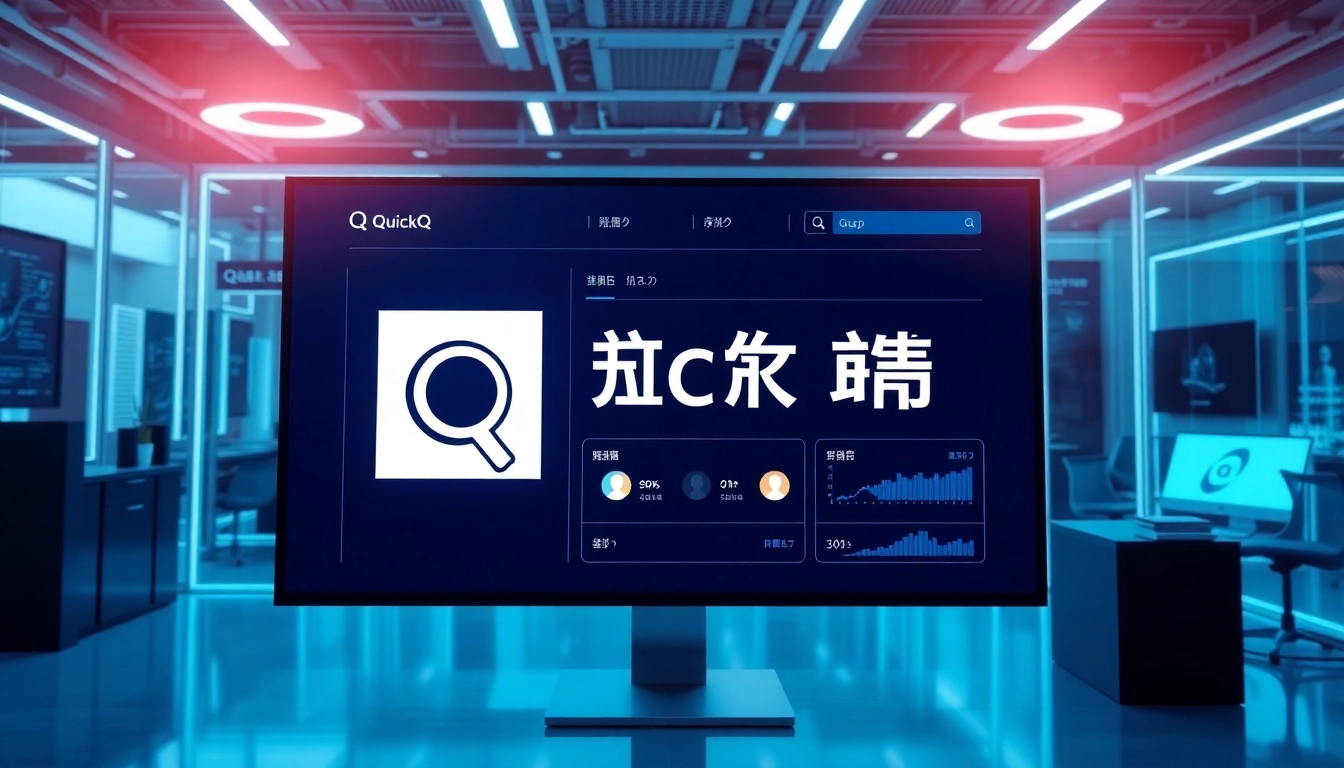What is an IP Phone?
Definition and Functionality
An IP Phone is a type of phone that uses Internet Protocol (IP) to transmit voice communications over a network, transforming sound into digital signals that can be sent over the internet. Unlike traditional telephones that operate on analog signals and physical telephone lines, IP Phones harness the power of Voice over Internet Protocol (VoIP) technology. This offers a range of functionalities that traditional telephony cannot provide, including enhanced features such as video calling, call forwarding, voicemail to email, and conferencing.
How IP Phone Systems Work
IP Phone systems operate using a network of interconnected servers, routers, and gateways that facilitate the transmission of voice data packets. When a call is made, the IP Phone converts audio into digital packets, which are then transmitted through the internet as data. The signaling used in these communications is based on protocols such as H.323, SIP (Session Initiation Protocol), or MGCP (Media Gateway Control Protocol), allowing efficient call management and control. At the receiving end, the packets are converted back into audio that can be understood by the receiving party.
Key Features of IP Phone
- Video Calling: Many IP Phones come equipped with video capabilities, allowing for face-to-face communication regardless of geographical location.
- Voicemail: IP Phones often include advanced voicemail features that may integrate with email, allowing users to receive messages directly in their inbox.
- Call Forwarding: This feature allows users to redirect incoming calls to another phone number seamlessly.
- Conference Calling: Users can easily facilitate collaborative meetings with multiple parties by utilizing conference call features.
- Integration with Software: IP Phones can often integrate with customer relationship management (CRM) systems and other business applications, enhancing productivity and communication efficiency.
Benefits of Using IP Phone
Cost Efficiency in Communication
The adoption of IP Phone systems can result in significant cost savings for businesses. Traditional landline services often involve substantial installation and maintenance fees, while VoIP systems typically reduce or eliminate these expenses. VoIP calls ride on existing internet infrastructure, allowing users to make local and long-distance calls at little to no extra cost, leading to substantial savings in monthly phone bills.
Improved Audio Quality
While traditional phone services often experience issues with clarity and disconnection, IP Phones deliver superior audio quality. They utilize advanced codecs that compress and decompress voice data efficiently, reducing latency and improving the overall communication experience. Moreover, many IP Phones support wideband audio, which provides richer sound quality and more natural voice reproduction.
Flexibility and Scalability
Businesses often face the challenge of scaling their communication systems as they grow. IP Phone solutions offer unmatched flexibility and scalability, allowing organizations to add or remove phone lines quickly according to shifting needs. New features can also be integrated with ease, ensuring businesses can adapt to evolving communication requirements without extensive reconfiguration of their existing systems.
Choosing the Right IP Phone
Factors to Consider
Selecting the appropriate IP Phone involves evaluating several facets that cater to the specific needs of the organization. Key considerations include:
- Type of Phone: Determine whether a desktop, cordless, or conference phone best suits your operational needs.
- Connectivity: Ensure the phone is compatible with your existing voice network, including Ethernet and Wi-Fi options.
- Features: Assess whether you need essential features like call holding, routing, and optional video capabilities.
- Ease of Use: Evaluate the user interface and how intuitive the device is, ensuring team members can access features without extensive training.
- Support and Warranty: Consider the manufacturers’ support services and warranties to ensure accountability and reliability.
Popular IP Phone Features
Successful IP Phone systems often include a plethora of features designed to enhance communication. Some popular ones are:
- Digital Display: An LCD screen can provide visual interaction with features and call management tools.
- Programmable Keys: These keys allow for the customization of features for easy access, enhancing efficiency.
- Headset Port: Facilitates hands-free communication, proving beneficial for longer calls or multi-tasking.
- PoE (Power over Ethernet): This feature enables IP Phones to receive power and data through a single cable, simplifying installation and reducing clutter.
- Emergency Calling: Provide users with the capability to easily contact emergency services, a critical requirement for many organizations.
Comparative Analysis
When comparing various IP Phone models, it is essential to evaluate them against your unique requirements. Consider analyzing aspects such as audio fidelity, build quality, features offered, and the total cost of ownership, which includes upfront costs and ongoing operational costs. Engage stakeholders in discussions to formulate a comprehensive list of needs and use cases, and draft a weighted scoring system to assess which options meet your needs the best.
Installation and Setup of IP Phone
Step-by-Step Guidance
Successfully installing an IP Phone involves meticulous planning and execution. Here is a systematic guide:
- Prepare the Network: Ensure your network can support VoIP traffic, including adequate bandwidth and Quality of Service (QoS) parameters.
- Connect the Hardware: Plug the IP Phone into the network using the appropriate Ethernet cables. If the phone supports PoE, connect it to the PoE switch.
- Configure the Settings: Access the phone’s user interface, often via a web portal, to input network settings such as DHCP, static IP, and any necessary SIP credentials.
- Test the Connection: Make test calls to ensure that the phone operates correctly. Check features like voicemail and conferencing to confirm they work seamlessly.
Common Mistakes to Avoid
During the installation process, it’s important to be aware of common pitfalls that can lead to complications:
- Neglecting Network Capacity: Failing to assess network capacity can lead to dropped calls and poor audio quality.
- Inadequate Configuration: Incorrect SIP settings or user credentials can impede functionality; double-check these details before proceeding.
- Ignoring Firmware Updates: Outdated firmware can result in security vulnerabilities; always ensure your phones are updated to the latest version.
Best Practices for Configuration
To optimize the performance of your IP Phone, follow these best practices:
- Implement QoS Settings: Configure your network’s Quality of Service settings to prioritize VoIP traffic over routine data traffic.
- Use VLANs: Implement a dedicated Virtual Local Area Network for VoIP traffic to reduce congestion.
- Regular Maintenance: Schedule periodic assessments of the communication system to ensure optimal performance and necessary upgrades.
Future Trends in IP Phone Technology
Emerging Features
As technology evolves, so too do the features associated with IP Phone systems. Emerging features include:
- Artificial Intelligence: AI-driven functionalities, such as voice recognition and intelligent call routing, are becoming commonplace, enhancing user experience.
- Mobility Solutions: Growing integration with mobile applications to allow seamless communication across devices, enhancing flexibility.
- Cloud-Based Services: Increased shift towards cloud-hosted PBX solutions that permit easier scalability and reduced maintenance responsibilities for organizations.
Integration with Other Technologies
Future developments indicate a pronounced tendency towards the integration of IP Phone systems with emerging technologies. Notable integrations include:
- Unified Communications: Tightly integrating functions like instant messaging, email, and video conferencing within a single interface.
- CRM Integration: Streamlining customer interactions by connecting to CRM software to provide agents with caller histories and insights in real-time.
- Collaboration Tools: Enhanced compatibility with project management and collaborative platforms, facilitating productive teamwork across locations.
Impact on Business Communication
The evolution of IP Phone technology is paving the way for more seamless and efficient business communications. As organizations adopt these technologies, they are likely to experience improvements in responsiveness, customer service, and internal coordination. The growing reliance on cloud solutions and advanced analytics will further shape how businesses interact with their clients and each other, ensuring that communication remains at the forefront of their operations.














Leave a Reply